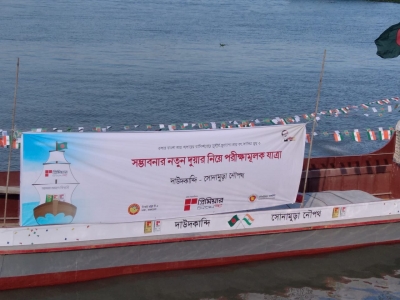India and Bangladesh are moving fast on developing linkages through waterways while consolidating their many individual investments into a comprehensive ‘Eastern Waterways Grid’. The project is aimed at interlinking the rivers and connecting them with roads and rail to reach the last mile.
According to the World Bank India-Bangladesh trade stands well below its $10 billion potential. “If the right measures and policy decisions are taken, the two countries can prosper together and this will benefit millions in the region,” an economist told India Narrative.
The two countries share 54 transboundary rivers. Despite existing bilateral agreements for using designated riverine routes for trade and transit, infrastructural development initiatives have started recently.
A blog published by the World Bank noted that both India and Bangladesh have already started reviving the long-defunct water channels that the two countries share. “With congested roads, swelling carbon footprints and the rising costs of land, they are turning to the region’s 3,500 km of navigable rivers for a greener and cheaper alternative,” the blog said.
Also read: Chittagong seaport, can break the northeast's reliance on the "chicken's neck," unshackle trade: ADB
India passed the National Waterways Act in 2016. Several routes along the Ganga and Brahmaputra are being revived and developed.
More than 100 new water courses have also been added to the navigable network, the World Bank said.
The grid has the potential to rejuvenate the economies of the eastern subcontinent, generating rich dividend for the 600 million people lining in that region.
The World Bank said that the project is a win-win situation as India gains better connectivity with its northeastern states while Bangladesh earns revenues from port fees, cargo handling, and other services.
“Landlocked Nepal and Bhutan are also starting to harness the potential of the waterways to gain easier access to Bangladesh and India, as well as to ports on the Bay of Bengal. Bhutan is already using the waterways to export crushed stone to Bangladesh for use in its construction industry,” it noted.




















